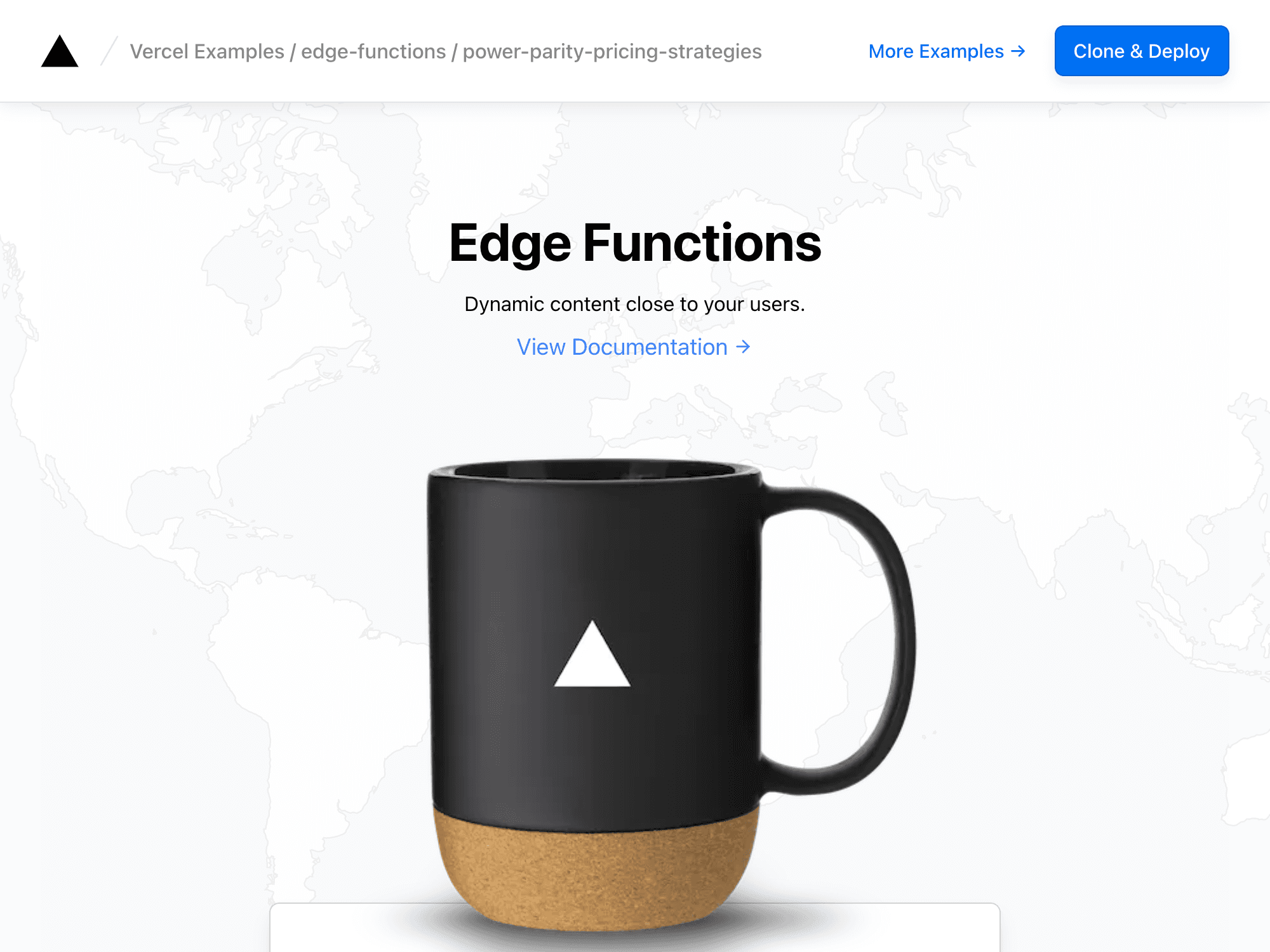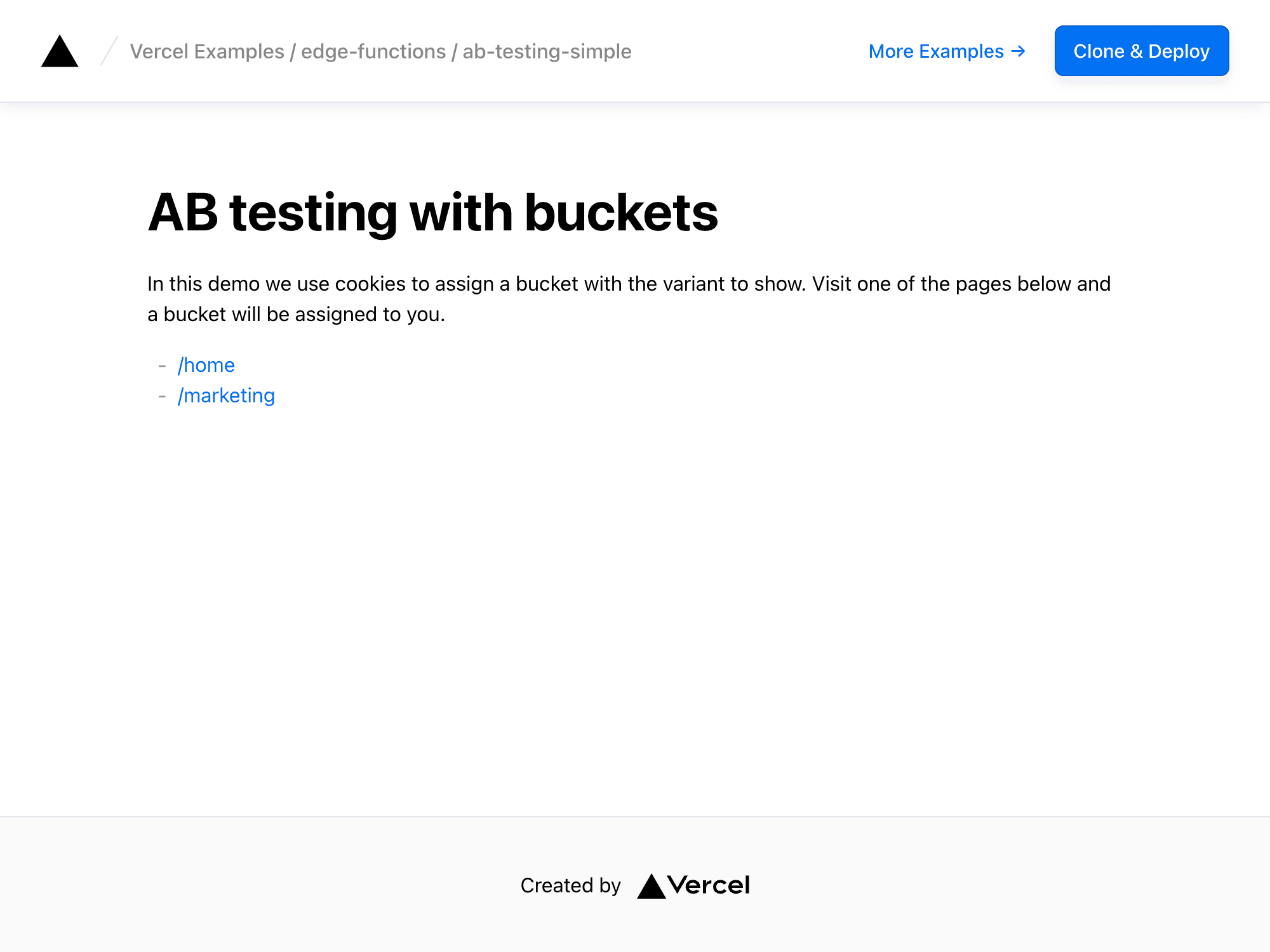Power Parity Pricing Strategies
Shows the differences between doing PPP at the edge using information from the geolocation object, Node.js SSR, and client-side rendering.

Power Parity Pricing Strategies
The example shows the differences between doing PPP at the edge using information from the request geolocation object, Node.js SSR, and client-side rendering.
Demo
https://edge-mug.vercel.app
How to Use
You can choose from one of the following two methods to use this repository:
One-Click Deploy
Deploy the example using Vercel:
Clone and Deploy
Execute create-next-app with npm or Yarn to bootstrap the example:
Next, run Next.js in development mode:
Deploy it to the cloud with Vercel (Documentation).

Power Parity Pricing Strategies
Shows the differences between doing PPP at the edge using information from the geolocation object, Node.js SSR, and client-side rendering.
Power Parity Pricing Strategies
The example shows the differences between doing PPP at the edge using information from the request geolocation object, Node.js SSR, and client-side rendering.
Demo
https://edge-mug.vercel.app
How to Use
You can choose from one of the following two methods to use this repository:
One-Click Deploy
Deploy the example using Vercel:
Clone and Deploy
Execute create-next-app with npm or Yarn to bootstrap the example:
Next, run Next.js in development mode:
Deploy it to the cloud with Vercel (Documentation).
